Results 1 to 1 of 1
Thread: 9 secrets from the 2012 race
Thread Information
Users Browsing this Thread
There are currently 1 users browsing this thread. (0 members and 1 guests)
-
09-03-2013, 07:38 PM #1
9 secrets from the 2012 race
Inside the bubble: 9 secrets from the 2012 race
By Peter Hamby, CNN Political Reporter
updated 4:54 PM EDT, Tue September 3, 2013
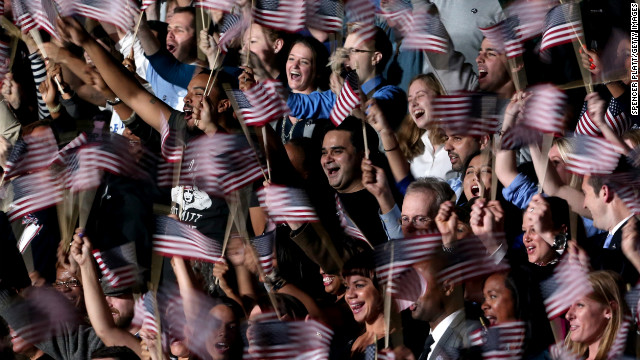 A blur of waving flags greeted President Barack Obama's victory speech at an election night event in Chicago, Illinois.
A blur of waving flags greeted President Barack Obama's victory speech at an election night event in Chicago, Illinois.
STORY HIGHLIGHTS
- Campaign trail today attracts reporters with the metabolism to thrive in the new world order
- Romney adviser says Twitter made it easier for campaigns to spin their message
- But what was being tweeted was irrelevant to most voters
- A youth movement on the campaign trail and nicknames for reporters also part of life on the trail
Washington (CNN) -- Don't want to read a 95-page treatise on the high velocity nature of modern political reporting and its impact on presidential politics?
Cool. We've got you covered.
After covering the 2012 presidential race, a nearly two-year slog that played out as much on Twitter and debate stages as much as it did in Iowa or New Hampshire, I was lucky enough to take a five-month hiatus from the breathless news cycle and complete a spring fellowship at Harvard University's Joan Shorenstein Center on the Press, Politics and Public Policy, writing a paper on the nature of today's up-tempo, web-driven brand of political reporting.
Using Mitt Romney's 2012 campaign as a case study, I interviewed roughly 70 journalists and insiders from Romney's operation, and President Barack Obama's, to figure out what's behind the fraying relationship between political professionals and the reporters who cover them.
Along with plenty of behind-the-scenes reporting, there are a number of lessons for both the press and campaigns in the paper, which I titled "Did Twitter Kill The Boys On The Bus?" You should absolutely read it by clicking here.
But in the interest of saving you some time, what follows is a CliffsNotes version. Here, then, are nine things you may not know about covering the 2012 presidential race from the front lines:
1. It ain't cheap
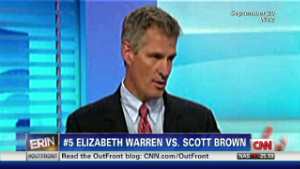 Political rivalries to watch in 2013
Political rivalries to watch in 2013
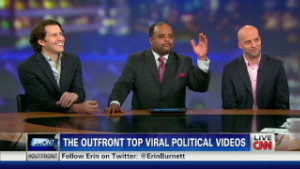 The top political viral videos of 2012
The top political viral videos of 2012
At the height of the general election, it could cost as much as $10,000 a week or more to embed a reporter full-time on the Romney or Paul Ryan's vice presidential campaign, a bill that usually included the cost of charter flights, bus rides, wireless Internet, "hold rooms" and food. That number was often five times higher for the television networks, which dispatched reporters, producers and camera crews to fly around with the candidates.
Several reporters interviewed for the paper provided their invoices for travel on the Romney campaign.
Six days of travel with Romney in October 2012 cost $4,080 for one reporter and his news organization, a tab that included a $9.54 food charge from Crepe Company, an Orlando dessert specialist. But that was a cheap week.
For the week of October 29 to November 5, the Romney campaign billed reporters traveling with Ryan a total of $12,805, largely for charter flights and "Ground Events."
On a single day, November 1, reporters traveling with Ryan were charged $4,381 to travel with the vice presidential nominee from Chicago to Fort Lauderdale to Las Vegas to Reno.
An editor would be forgiven for questioning the value of those flight legs, given how little news Ryan was stirring up at that point in the race.
2.It's a young person's game
Despite their many disagreements with Romney and his aides, several reporters traveling with the campaign throughout 2012 were actually sympathetic to one of the campaign's biggest gripes: that the press corps was too young.
It's always been this way, to an extent: Traveling with a presidential candidate for a year or more can be a grind. You live out of a suitcase and operate on next-to-no sleep for days on end. But the pressure in 2012 to fill multiple news platforms with content, multiple times a day, meant the newest generation of reporters had be even more hard-charging than in cycles past.
The campaign trail today attracts reporters with the kind of metabolism to thrive in this new world order. To the dismay of the Romney campaign—and their counterparts in Chicago—that meant their press retinue was young and, in their eyes, ill-equipped to cover the most far-reaching and momentous story in the country.
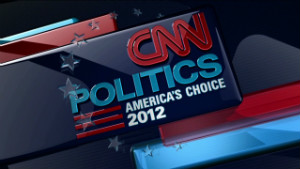 CNN 2012 election highlights
CNN 2012 election highlights
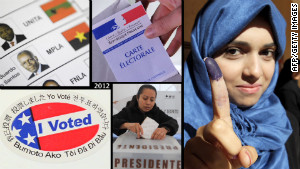 2012 elections returned familiar faces
2012 elections returned familiar faces
The lack of veteran journalists on the plane in 2012 was indeed problematic, according to many journalists who rode along with Romney in the press cabin of "Hair Force One," as some in the press dubbed their charter jet, in honor of the perfectly coiffed Republican nominee.
"I did often feel, honestly, it would have been nice to have had a layer of people with more experience to kind of look to," said one national print reporter on Romney's plane.
Several reporters who did not want to be named expressed similar regrets about the collective age of the press corps. Having seasoned political minds on board would have been nice, they said. But it also would have been useful to tap into some reliable institutional knowledge about media-campaign relations, to answer questions about access and procedures.
"I felt like I didn't have anybody to learn from," said another reporter on the plane who wished to remain anonymous. "Young reporters have always been on campaigns, but in the past there were also reporters who had traveled on a day-to-day basis who had been there and done that and had a bit of gravitas and stature and ability to throw their weight around with a campaign."
In 2008, there were plenty of young reporters mixed in with journalistic veterans traveling with Barack Obama, Hillary Clinton and John McCain. For a variety of reasons, in 2012, those veterans were mostly staying far away from the Romney bus.
This didn't mean the Romney reporters were a bunch of wide-eyed journalism rookies. To the contrary, many had experience on political beats and some had covered the previous presidential ace.
But the brand name political journalists whose bylines grace the front pages of the major newspapers were a rare sight on the Romney plane.
This was partly a problem of Romney's own making. In 2012, Romney advisers harbored so much distrust toward the press and kept the candidate so cocooned that veteran reporters did not even bother jumping on the bus to cover the Republican nominee.
Throughout the Romney campaign, there was decidedly less to "get" inside the bubble than ever before. So big foot reporters mostly ignored the bus and found stories elsewhere.
3. Nicknames -- and not nice ones
Campaign operatives sometimes come up with nicknames for the journalists that cover them.
Some in Al Gore's 2000 campaign referred to the female print reporters on their plane as "The Spice Girls." Hillary Clinton aides in 2008 referred to their cliquish band of traveling television "embeds" as "The Heathers."
The Romney press corps in 2012 liked to call themselves the "Romney Ramblers," a nod to the innovative automobile that made Romney's father George rich and famous.
David Axelrod, Obama's senior adviser, had another name for the Romney press corps, which he and others in Chicago thought were too soft on the Republican nominee. He called them "Patty Hearst."
4.News-what?
TIME and Newsweek once housed many of political journalism's liveliest storytellers and were long seen by campaigns as crucial agenda-setters for media elites and voters alike.
Karen Hughes, a top aide to George W. Bush, placed a premium on courting the magazine writers covering the Bush's 2000 campaign—including Time's Jay Carney, now President Obama's White House spokesman. Once Bush was in the White House, Hughes even held a weekly briefing for magazine writers, a routine that no longer exists.
"If they chose to put something on the cover it could drive stories for several days," Hughes said of the two magazines. "They were important."
But the time the 2012 campaign was in full bloom, there was only one newsweekly that the Obama and Romney campaigns cared about -- TIME.
Newsweek had seen its circulation tumble by a staggering 51% between 2007 and the end of 2012, when it rolled out its final print edition and moved to an all-digital format after merging with Tina Brown's website, The Daily Beast. The site was heavy on opinion writing and essays but, with few exceptions, thin on original reporting.
Full-time Romney reporters had trouble recalling any Newsweek journalists in the traveling press. One Obama press strategist described the once-mighty brand as "so unimpactful I honestly don't know what you're talking about."
That's a startling comment considering Newsweek's heavy campaign footprint in previous cycles, when they paid for multiple reporters at a time to fly around the country with a candidate—one or two writers to cover the campaign as it unfolded, and another to report only for a behind-the-scenes book project that would be printed after the election.
2012 Election highlights
5.Twitter was everything
For reporters covering the 2012 race, Twitter was the usually the first iPhone app they opened bleary eyed in the morning, and the last one they peeked at before falling asleep at night.
Everyone in politics, it seemed, was on Twitter: journalists, editors, pundits, campaign managers, television producers, bureau chiefs, flacks, pollsters, activists, lobbyists, donors, wives of donors, daughters of donors, hacky operatives, buffoonish down-ballot candidates, cousins of direct mail specialists, interns desperate for re-tweets. Even Dick Morris was on Twitter.
When political news broke, Twitter was the place to find it. Top officials from the Obama and Romney campaigns would joust, publicly, via tweet. When news producers back in Washington and New York were deciding what to put on their shows, many looked first to their Twitter feeds.
"It's the gathering spot, it's the filing center, it's the hotel bar, it's the press conference itself all in one," said Jonathan Martin of The New York Times. "It's the central gathering place now for the political class during campaigns but even after campaigns. It's even more than that. It's become the real-time political wire. That's where you see a lot of breaking news. That's where a lot of judgments are made about political events, good, bad or otherwise."
Operatives in each of the campaigns understood the potency of Twitter as a way to watch, and influence, how narratives were forming among journalists.
Romney adviser Eric Fehrnstrom said Twitter "made it easier to spin" after debates.
"We knew if there was a favorable storyline that was developing on Twitter, we knew to take that and emphasize it in the spin room," he said. "If there was negative storyline that had developed during the debate we knew that that was going to be a talker in the spin room. And we would prepare a specific response to that."
6.... and Twitter was nothing
In March of this year, the Pew Research Center released a study comparing Twitter reaction to major events to the reaction of the America public, as measured by polls.
The study examined big political moments, like Obama's 2012 State of the Union address and the Supreme Court's decision to uphold his health care reform law. Pew found a startling disconnect between how Twitter users interpreted the events versus the reaction of the public at large.
The explanation was fairly straightforward: "Twitter users are not representative of the public."
Only a "narrow sliver" of Americans — just 13% — were using Twitter during the fall campaign. Twitter users are younger and skew liberal. And only 3% of Twitter users "regularly or sometimes tweet or re-tweet news or news headlines on Twitter."
In other words, what political junkies were talking about on Twitter — the news wire that directly informed what influential reporters, editors and show producers decided to write and talk about on a minute-by-minute basis — was mostly irrelevant to the public.
Relive the campaign in 2 minutes
7."A link is a link, dude"
Ben LaBolt, Obama's national press secretary, said that during the 2008 campaign, his press shop could safely assume that the producers of the network television morning shows would read, or at least scan, the front page of The New York Times before going to air each day.
That was no longer the case in 2012.
The campaign correctly figured out that the political class -- reporters, producers, pundits, strategists -- was gathering information from an ever-expanding, complex patchwork of news and opinion sources beyond the dead-tree front pages of the legacy newspapers. Twitter became the clearinghouse for that news.
"That's one of the reasons why any time we got a story placed, either a proactive push on the president or a contrast on Romney, we'd create a digital package to push out with that story to make sure that people actually saw it, because we couldn't assume that getting it in the paper was enough to get it on TV nationally, and certainly not regionally," Labolt said.
In terms of reaching reporters and other people of influence, print newspapers and television news were mostly irrelevant. The content that mattered most to the press operatives working inside the campaigns was the digital product—the stories seen by political insiders who woke up in the morning and immediately starting scanning the headlines on e-mail and Twitter using their BlackBerrys or iPhones.
"A link is a link," said Matt Rhoades, Romney's campaign manager. "I've said this a million times. I used to say it going back to, like, 2004. A link is a link, dude."
It might be a link to The New York Times or Politico or RedState or ThinkProgress—an online story, no matter how biased or thinly reported, had a URL that could be peddled to other news outlets, linked to the Drudge Report and, most importantly, pumped directly into the Twitter feeding frenzy where the conventional wisdom was formed.
8.Beware the Orchestra Pit
In the course of researching the paper, I was often guided by Thomas Patterson, the press critic and Bradlee Professor of Government and the Press at Harvard. Patterson's book about the problematic role of the media in the American political process, "Out Of Order," was published 20 years ago but remains amazingly salient today. It should be required reading for any reporter or campaign professional.
In it, I came across a perfectly phrased theory that explains the political media's inclination to cover gaffes, conflict and controversies.
After the 1988 presidential race, Roger Ailes, a Republican campaign consultant who would later become the president of another television network that shall remain nameless, came up with a simple explanation for the media's approach to presidential races.
"If you have two guys on a stage and one guy says, 'I have a solution to the Middle East problem,' and the other guy falls into the orchestra pit, who do you think is going to be on the evening news?" Ailes asked.
The question, with its obvious answer, came to be known among media critics as the Orchestra Pit Theory of News.
It's not a particularly revealing or groundbreaking observation for any close watcher of politics. But it's a truism that campaigns still live by when it comes to dealing with reporters.
Five things we learned from the 2012 presidential election
9. Campaigns should play nice
If there's one big takeaway from the Romney campaign's press strategy, it's that being combative with reporters is just not workable in the Twitter era.
A campaign that treats reporters with hostility and indifference is usually rewarded with negative coverage.
That may seem obvious or intuitive, but the Romney media strategy often seemed like it was specifically concocted in some Cambridge laboratory to anger reporters.
With the filter-free nature of modern journalism, any perceived slight can zoom onto Twitter and become a larger story in a matter of minutes.
It used to be that campaigns could browbeat reporters into not writing a story. It still works sometimes. But for many reporters these days, intimidation tactics aren't really viewed as a threat -- they're viewed as story.
Witness Buzzfeed's decision last year to just publish a flagrantly combative e-mail exchange between their reporter, the late Michael Hastings, and Hillary Clinton adviser Philipe Reines.
It was a series of barbed and entertaining e-mails punctuated with a memorable F-bomb from the Clinton aide. The good folks at Buzzfeed just decided to post the thread online, on their own terms, without getting consent from Reines.
It went viral in minutes.
http://www.cnn.com/2013/09/03/politics/hamby-twitter-politics/index.html?hpt=hp_t2NO AMNESTY
Don't reward the criminal actions of millions of illegal aliens by giving them citizenship.
Sign in and post comments here.
Please support our fight against illegal immigration by joining ALIPAC's email alerts here https://eepurl.com/cktGTn


 LinkBack URL
LinkBack URL About LinkBacks
About LinkBacks




 Reply With Quote
Reply With Quote


72 Hours Till Deadline: Durbin moves on Amnesty
04-28-2024, 02:18 PM in illegal immigration Announcements